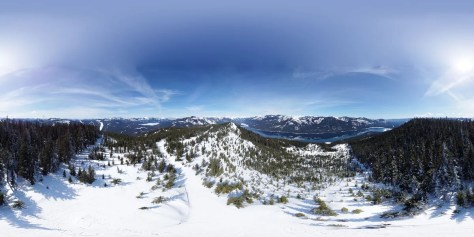I entered the following in the WebODM (Open Drone Map) forum. Some of it is a bit technical for this blog, but thought it might be interesting to some people.
Just for fun, and to learn more about WebODM and Blender, I flew my DJI Mini 2 drone around my deck to create a model. My deck has trees on 3 sides of it and overhanging it. Flying between the tree branches to get some of the shots was a bit challenging. There was a bit of a pucker factor a few times when flying inches below a branch and the drone started drifting upwards! (The Mini 2 has only forward and downward sensors, which is good here – I could never have flown that close to the trees if there were active sensors the other directions.)
I shot 142 images and processed those and saw some areas that didn’t seem to have adequate coverage. So I shot another 49 images to fill in some areas. That improved the places I concentrated on, but it seemed that some other areas decreased in quality. The glass railing and adjacent sunroom windows and doors caused some oddities, as expected. One thing I found odd is that the deck and other items seem to be “reflected” in the undersides of the tree branches.
My processing system is Windows 10 Pro on a laptop with 64GB of RAM. I initially processed this using Docker/WebODM, but ran out of memory when I increased pc-quality to ultra. I then processed it in Windows native WebODM, and it processed in 24+ hours. The WebODM timer showed 36 minutes, so I don’t have accurate information…
I postprocessed this with Blender to clean up some of the extraneous parts of the model, but purposefully left most of the trees. To get the upload files under the 100MB limit for the free Sketchfab account, I decimated the model in Blender to 70% and converted the PNG files to JPG.
Processing parameters:
debug: true, mesh-octree-depth: 13, mesh-size: 1000000, min-num-features: 30000, pc-quality: ultra, resize-to: -1, verbose: true
Click on the image below to activate the model. Use your mouse buttons to change the view, and your scroll wheel to zoom in and out. Type “F”, or click the double-ended arrow in the lower right, to open it in full screen. (I highly recommend viewing it in full screen.)





